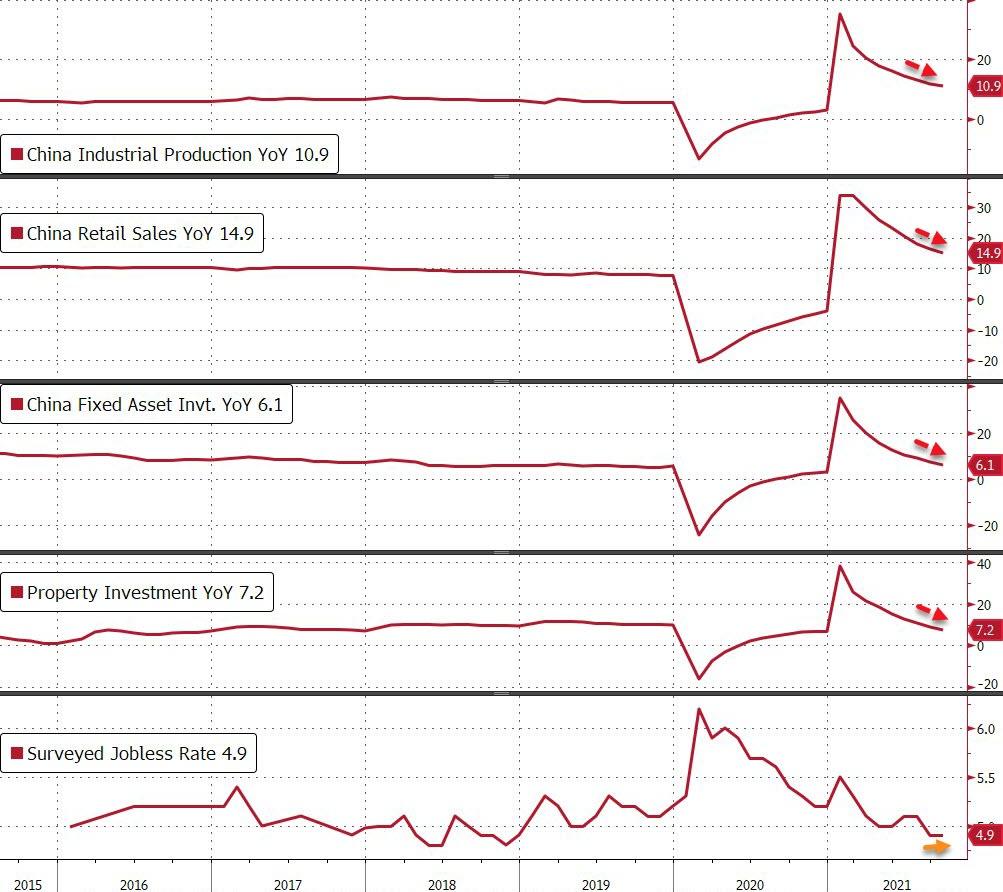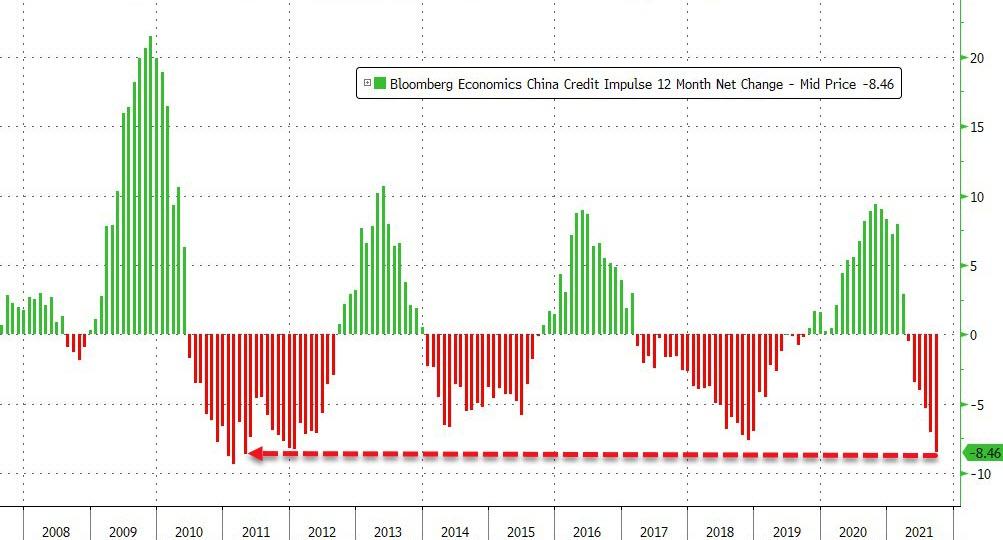The Chinese economy showed signs of stabilization in October as retail sales and industrial production rebounded from weak September figures and outperformed analysts' estimates.
Industrial production increased 3.5% YoY in October (exp. 3.0% YoY) from 3.1% in the previous month. Retail sales jumped to 4.9% YoY higher (exp. 3.5% YoY) from 4.4% in September which on the first sight showed the country’s economy stabilizing as spending improved and power supply picked up. On the other hand, fixed asset investments fell to 6.1% YoY from 7.3% in September and below economists' projections of 6.3% YoY. Property investments dropped to 7.2% YoY from 8.8% YoY in September and below market estimates of 7.8% YoY.
Start investing today or test a free demo
Create account Try a demo Download mobile app Download mobile app China's industrial output and retail sales grew more quickly than expected in October, but the slowing property sector weighed on the economic outlook. Source: Bloomberg via ZeroHedge
China's industrial output and retail sales grew more quickly than expected in October, but the slowing property sector weighed on the economic outlook. Source: Bloomberg via ZeroHedge
Despite relatively good data, officials and experts warn of bleak recovery prospects amid pandemic uncertainty and global supply chain problems. The main risk factor is weakening credit action. Credit impulse, defined as new funding provided by government, banking and other sources (e.g. issue of bonds and shares) in relation to GDP, has been in a downward trend since the beginning of this year. This indicator predicts not only the dynamics of GDP in China, but also the pace of growth of activity in global industrial processing. In order to maintain rapid growth in China, it will be necessary to increase support from fiscal and / or monetary policy.
 This year China's credit impulse contracted at its highest pace since April 2011. Source: Bloomberg via ZeroHedge
This year China's credit impulse contracted at its highest pace since April 2011. Source: Bloomberg via ZeroHedge
However, according to Bloomberg's Chief China Markets Correspondent, Sofia Horta e Costa PBOC needs to be cautious. If liquidity tightens too much, there could be a repeat of the credit squeeze a year ago when the central bank injected excessive cash to the financial system and only a few months later, Chinese officials had to reduce the excessive leverage and warned investors of the risk of asset bubbles.
